Brown Butter (beurre noisette) is a simple and excellent way to add complex flavor to many recipes!
Learn how to make brown butter, and all the recipes you can use it in! Like these brown butter blondies, brown butter rice krispie treats, banana layer cake with brown butter cream cheese frosting, and even butterscotch ice cream with brown butter.
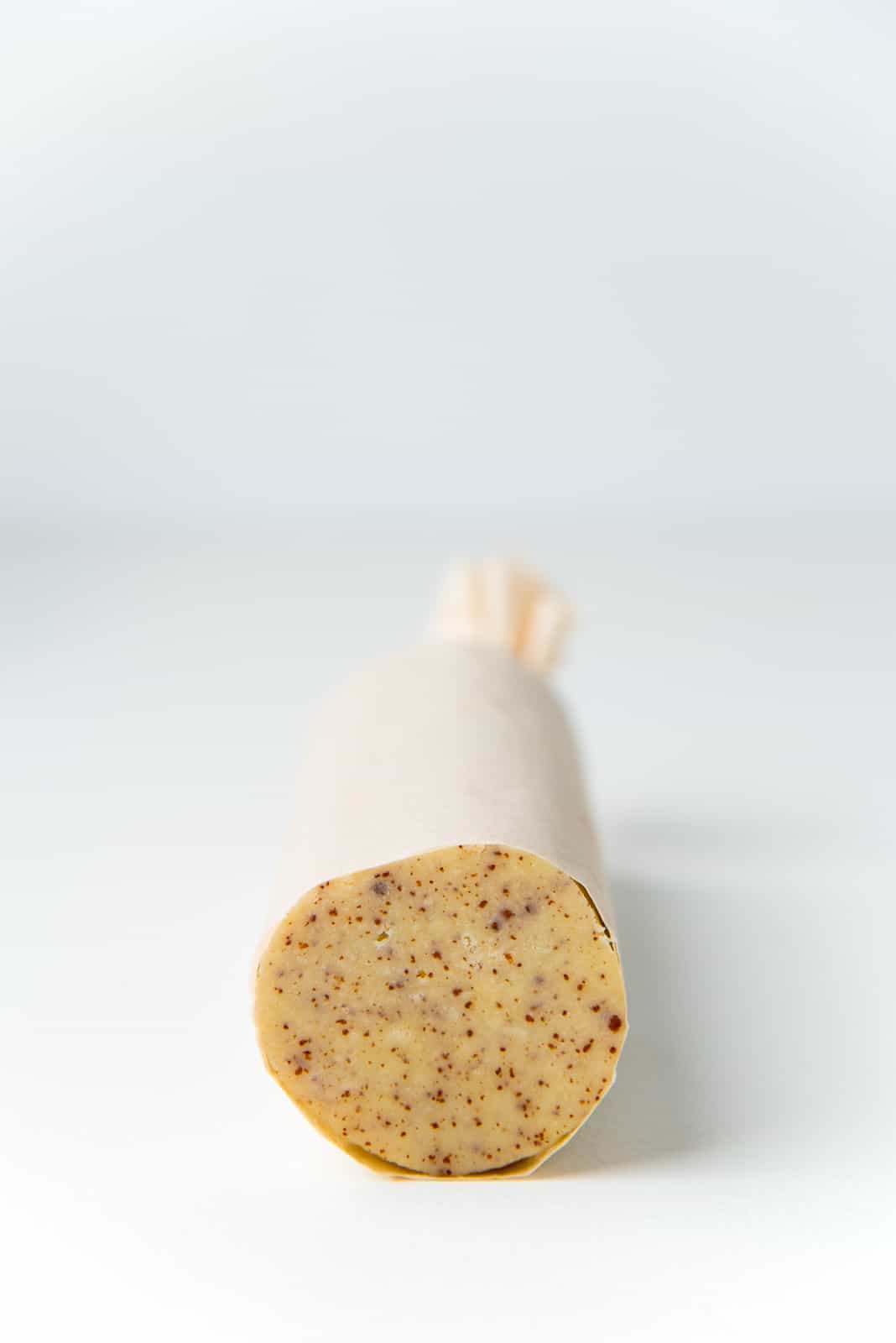
Brown butter is one of my favorite ways to amp up the flavor of baked goods.
I accidentally stumbled upon brown butter when I was making my omelettes in a pan where I let the butter caramelize a bit too much. That was a revelation. And that was when I was 10 years old. All these years later, I am still a fierce brown butter enthusiast.
Here I’m going to show you how to make brown butter. And it’s so easy. It’s that one ingredient that can elevate so many of your recipes, in ways you couldn’t imagine. And I know you’re going to love it as much as I do! 🙂
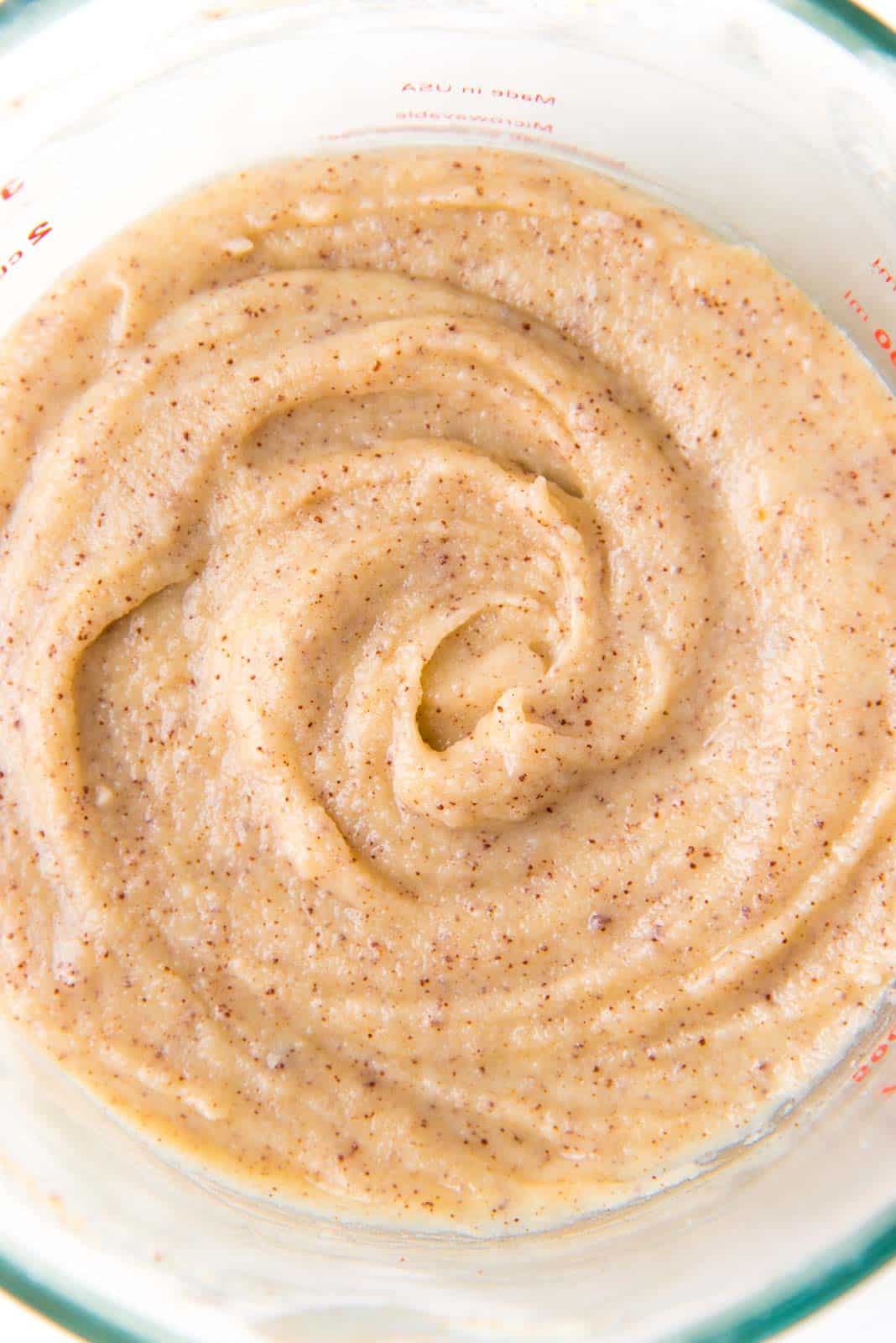
What is brown butter?
Butter that is heated to the point of toasting its milk solids. These milk solids caramelize and brown (hence brown butter), giving this an amazing nutty flavor and aroma.
In French, brown butter is called Beurre noisette. The direct translation is “hazelnut butter”. While clearly there are no hazelnuts in it, there’s a reason for the name. And that’s because the butter imparts a nutty, hazelnut-like aroma as it turns into brown butter.
This ingredient has such a strong aroma and flavor, but it is very subtle when used in recipes. That’s why it works best in recipes that have complimentary flavors or recipes that don’t have a lot of overpowering flavors.
How to make brown butter
It couldn’t be easier.
Cut your butter into small pieces (tablespoon-sized pieces – roughly, don’t have to pull out your ruler and protractor). This is to make sure the butter melts evenly and quickly.
Place the butter in a wide pan. I use my 10 inch pan, for 8 – 16 oz of butter, and an 8 inch pan for smaller quantities.
Heat over medium heat to melt all of the butter. It’s important to melt all the butter before you start to brown it. Otherwise, you could end up burning portions of the butter faster.
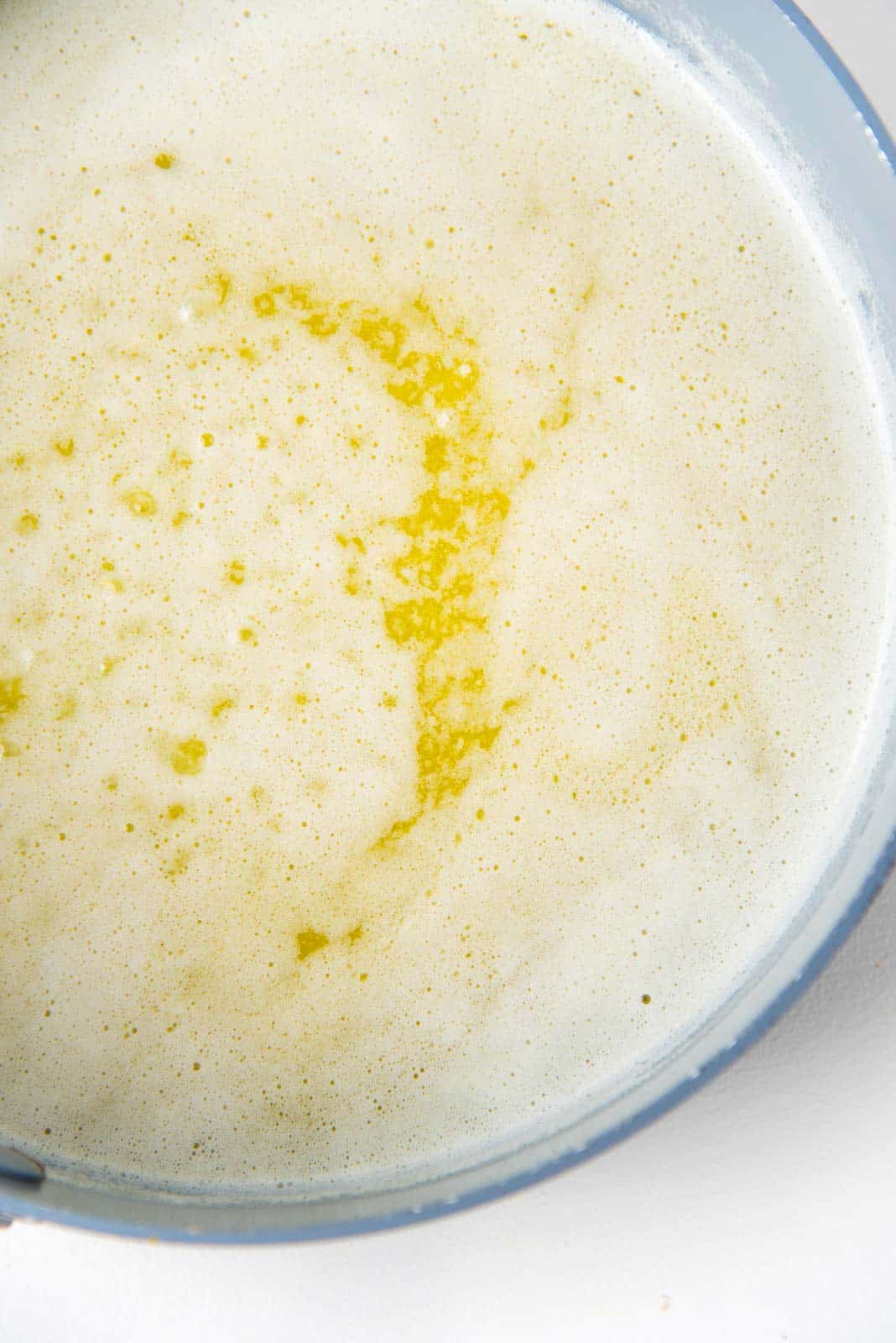
Once the butter is melted, increase the heat to medium-high, and cook the butter further. Do not to walk away from the butter at this point, since browning happens quickly at higher heat.
When the butter starts to turn yellow, it will very quickly go through the stages from being lightly caramelized to burnt. Remember to stir the butter frequently to prevent the milk solids from sticking to the bottom of the pan too!
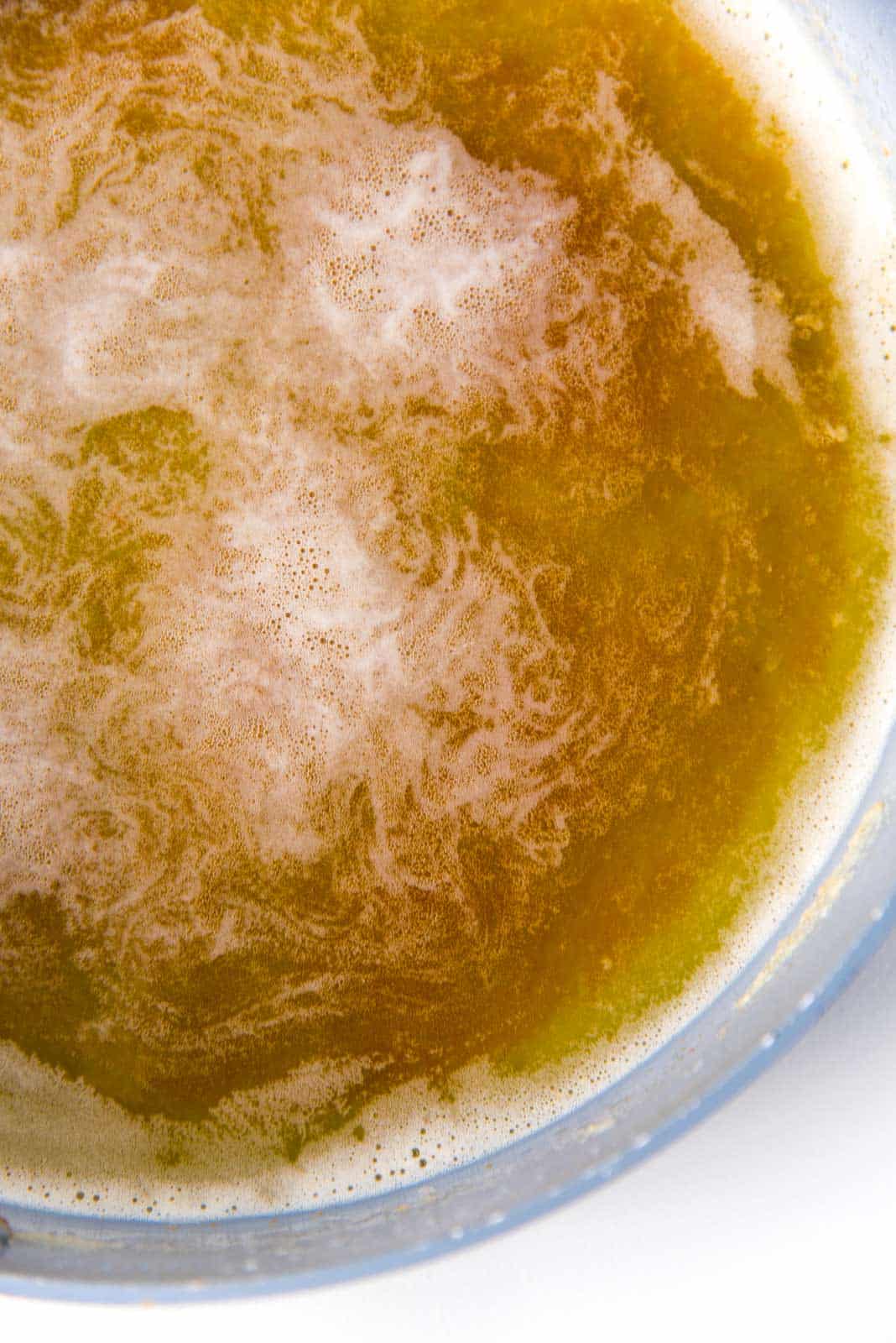
When the butter reaches the stage that we are looking for (between stage 5 – 7), you can plunge the bottom of the pan in ice water to stop the cooking immediately.
Alternatively, you can cook the butter just short of that stage you want, and allow the residual heat to toast the butter further.
It’s also important to immediately pour the butter into a heatproof bowl, so that it doesn’t cook much further!
The butter is now ready to use. Depending on whether you want hot, warm, cooled butter, allow it to cool before using. This butter won’t really harden up at room temperature, but it will in the fridge.
Now let’s briefly look at the different brown butter stages.
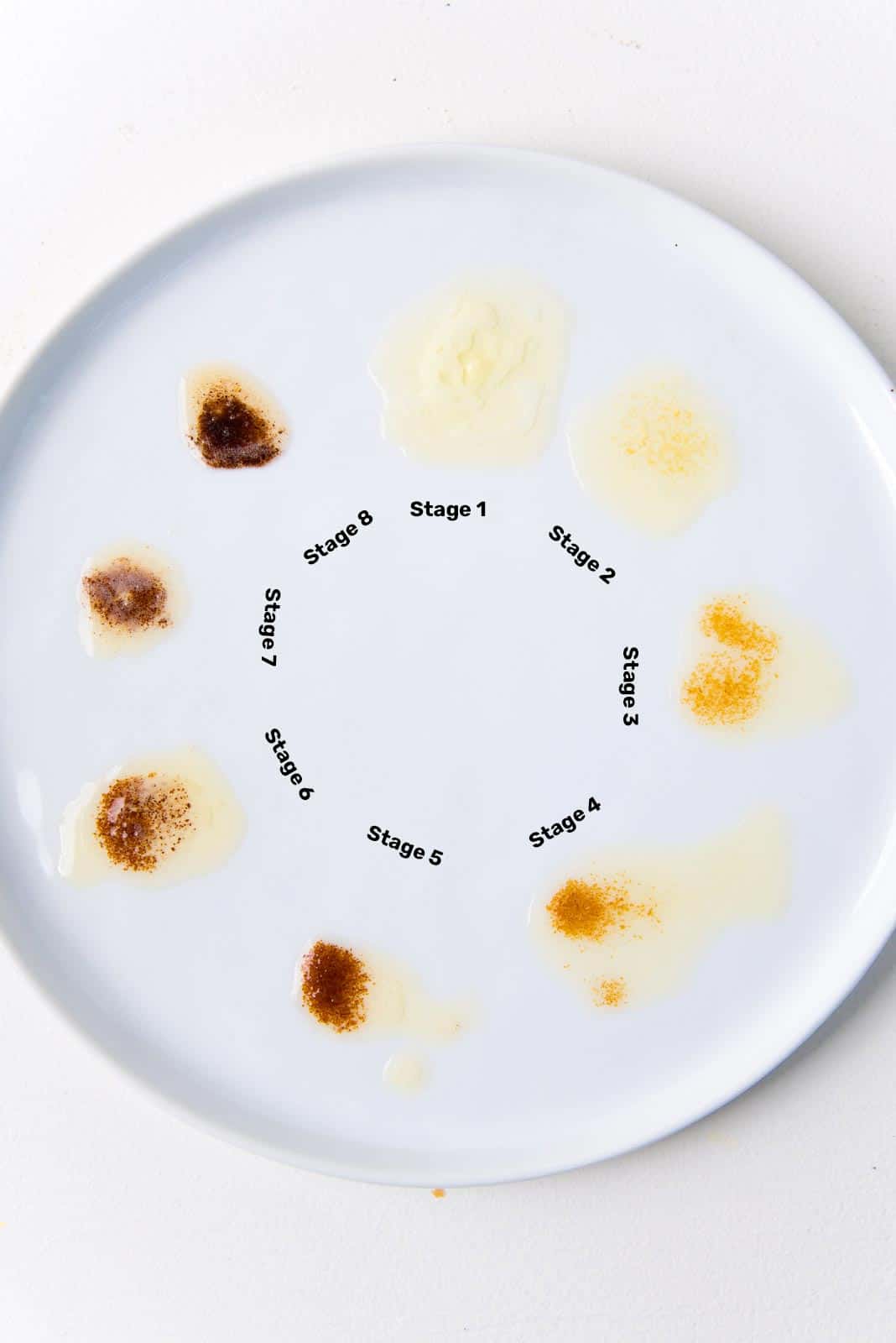
Stage one – melted butter
Butter has completely melted. The water is starting to evaporate and you will hear a spattering sound, which is the sound of water boiling under the butter fat. There will also be some foam on top.
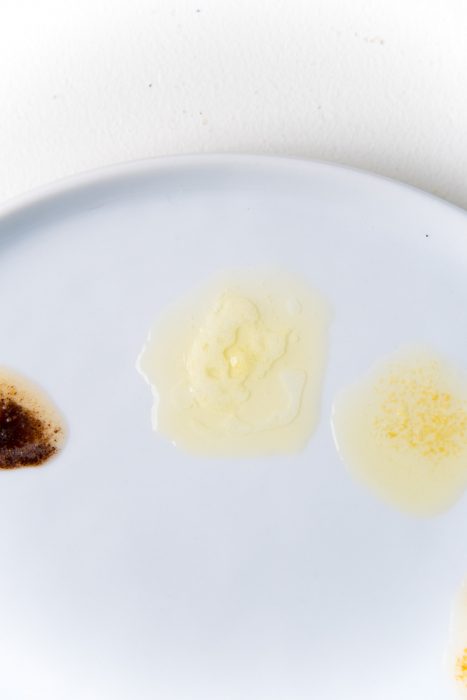
Stage two – milk solids separating from fat
There will be cloudy white pieces separating from the liquid and settling at the bottom of the pan. These are milk solids separating from the butter fat. The water may still be evaporating at this stage.
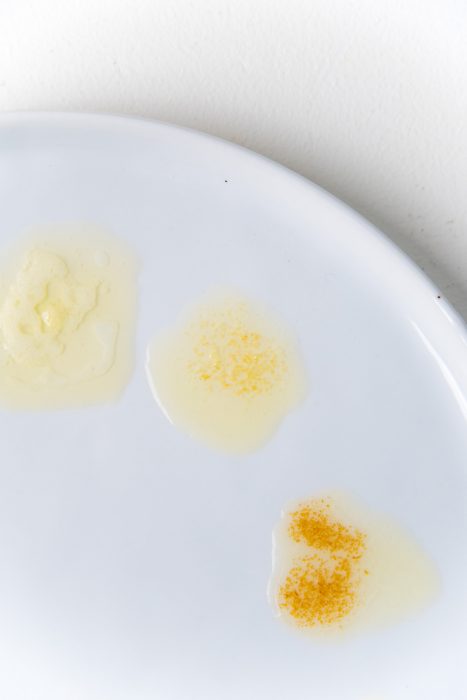
Stage three – milk solids starting to caramelize
The milk solids at the bottom of the pan will start to change in color to yellow. This light colored change is the start of the browning process. It’s important to frequently stir the butter at this stage, otherwise the milk solids WILL stick to the bottom.
The butter will start to smell really nutty. It’s delicious even at this stage, but the flavor is more subtle and will be easily lost when mixed with other ingredients.
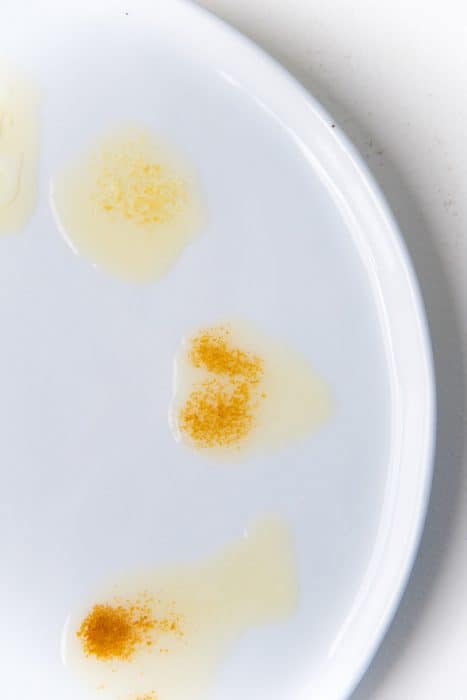
Stage four – light golden milk solids
Milk solids have cooked further into a light golden color. This lightly caramelized butter is getting more and more nutty.
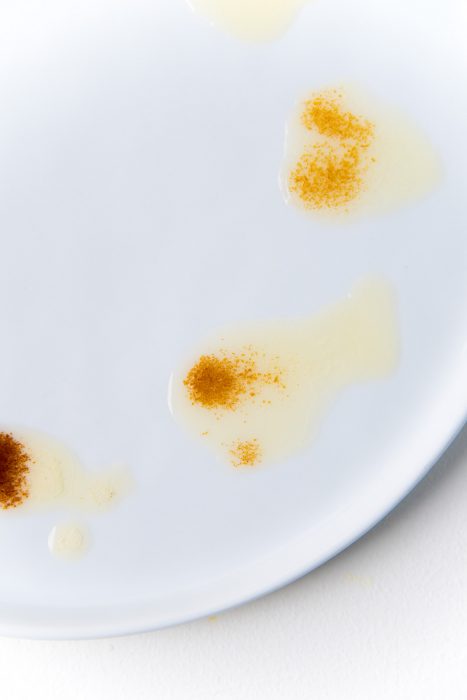
Stage five – dark golden milk solids
Milk solids are now dark golden brown in color and you should get a wonderfully nutty aroma too. The color will be much like the color of hazelnuts (with skin on).
This is the stage that most people will take the butter off heat. This butter has a fantastic nutty flavor and is perfect for any recipe.
However, I like to darken the butter a little more, for a little more complex flavor for baked goods. The butter is toasted just a touch further to deepen the caramelized flavor more.
This is a good stage to use the butter if you’re using it in simple recipes with only a few ingredients.
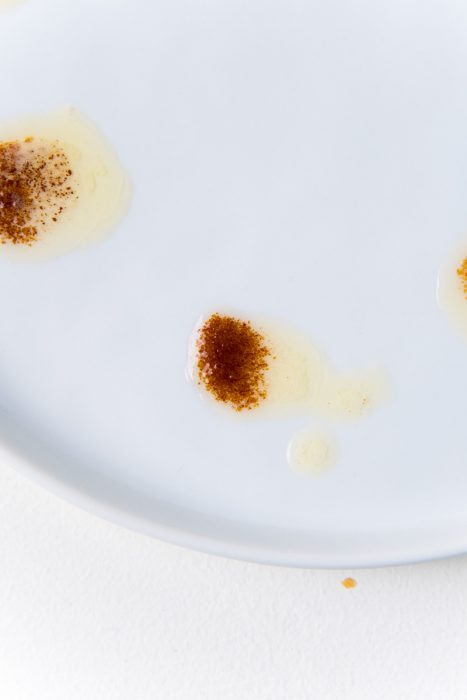
Stage six – darker milk solids
At this stage the milk solids are turning from dark golden to brown. You will see a mix of the two colors. Since I prefer stage 7 (dark brown milk solids), I usually take the pan off the heat at this stage.
The residual heat in the butter will continue to cook the milk solids.
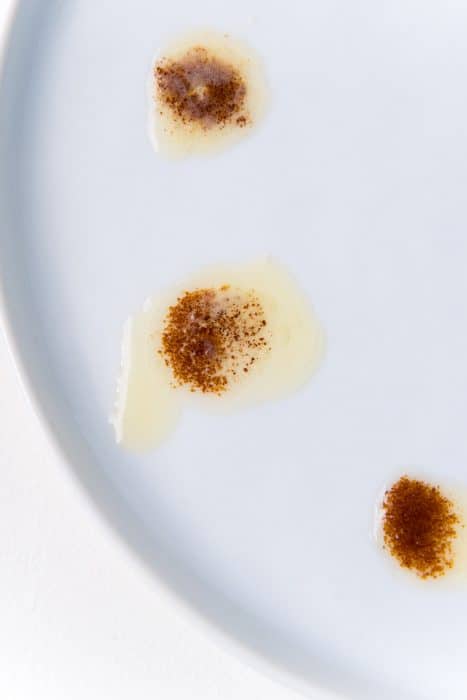
Stage seven – almost burnt butter
At this stage the butter will be a dark brown color. The nutty flavor is still very prominent, with a more complex toasty smell and flavor. I prefer my brown butter to be at this stage, since this flavor is more robust and stands out when mixed with other ingredients too.
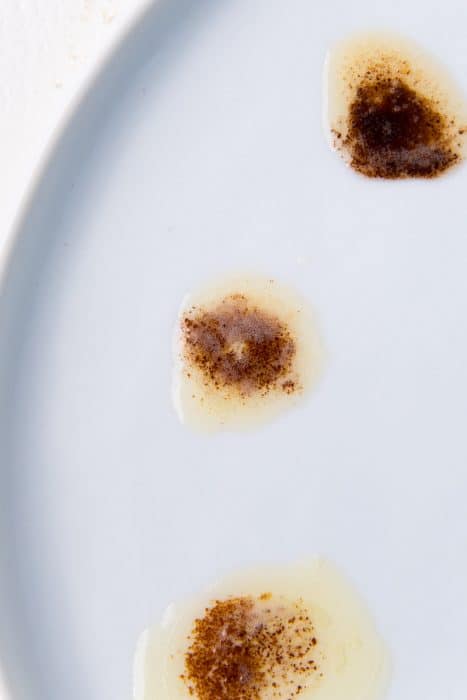
Stage eight – burnt butter
The milk solids are black in color. This butter has a nutty and slightly bitter flavor. You’d think this butter is not usable at this point, but you’d be surprised! 🙂
Burnt butter is still great in baked goods! So don’t throw it away.
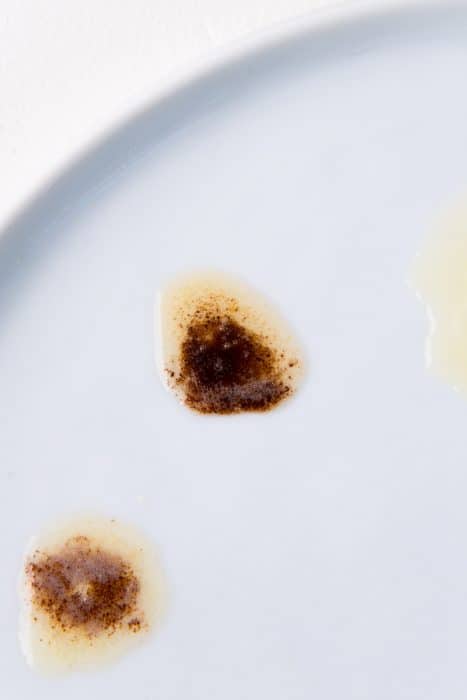
How to store brown butter
Brown butter doesn’t solidify the same way as regular butter. It stays really soft at room temperature and doesn’t hold its shape much. However, it will harden up when refrigerated.
You will also notice that the milk solids sink to the bottom of the butter fat. As it returns to room temperature, the butter fat will become cloudy and thick. If that happens, make sure to stir it to redistribute the milk solids in the milk fat.
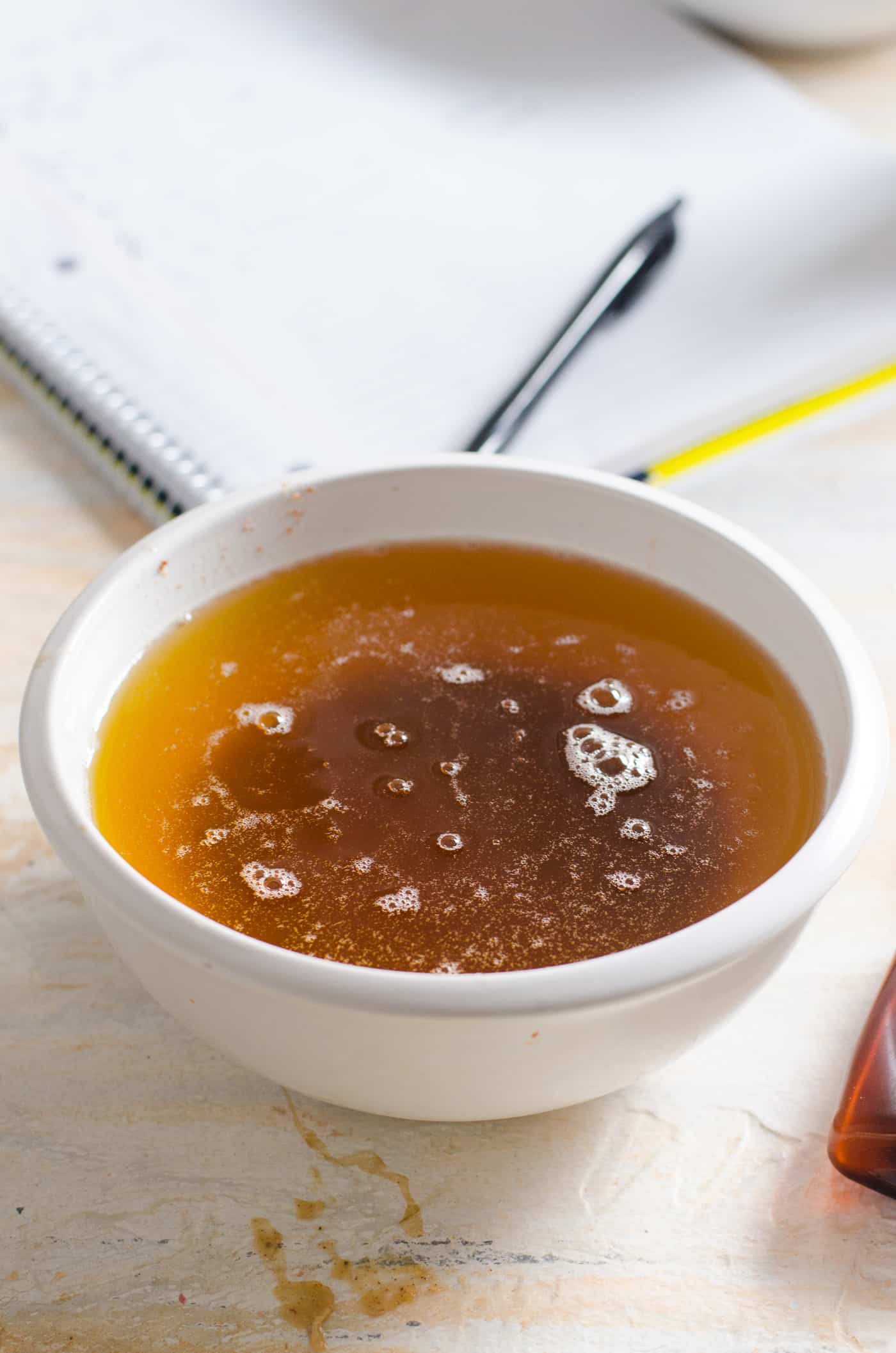
This is not necessary if you’re using all of the butter right away, and you want it in liquid form. However, if you’d like to store brown butter for later – redistributing the milk solids is important.

How to use brown butter in recipes
Brown butter is an incredible addition to both sweet and savory dishes. You could use it in almost any recipe that calls for butter. One thing to remember though is that it will taste better with a little salt too.
Savory dishes
Brown butter works especially well for savory recipes that require butter to finish the dish. Since the brown butter flavor can become subtle when mixed with a lot of savory flavors, you need to make sure that you give it enough room to stand out in a dish.
For example, you wouldn’t add brown butter to butter chicken, because the spices will overpower the flavor. However, it’s perfect for this brown butter lobster risotto, where you will add the butter at the end as a drizzle on top of the risotto and lobster.
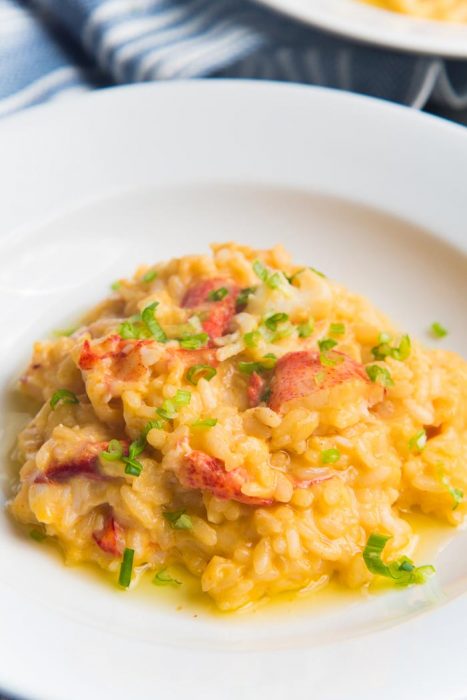
Sweet recipes
Brown butter can absolutely SHINE in baked goods! Especially in recipes that call for a lot of butter, you can substitute it with this, like my ultimate chocolate chip cookies! It works better in the presence of other flavors, like brown sugar, salt, or in recipes with minimal ingredients.
It will also work really well in sponge cakes, madeleines and financiers too. It’s also fantastic for any butterscotch-based desserts.
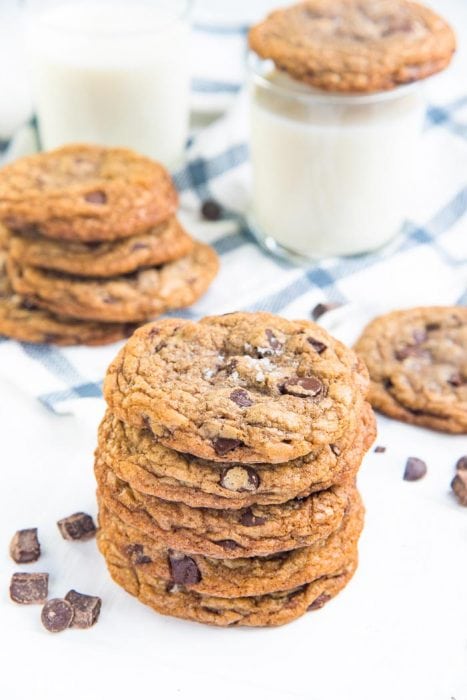
Recipes that use brown butter
Sweet recipes
- Brown butter butterscotch sauce
- Brown butter maple buttercream frosting
- The best chocolate chip cookies
- Brown butter madeleines
- Brown butter baked banana foster
- Pumpkin scones with brown butter glaze
- Brown butter blondies
- Banana layer cake with brown butter cream cheese frosting
- Brown butter rice krispie treats
Savory recipes
- Butter lobster risotto
- Brown butter pasta with eggplant caponata
- Brown butter salmon
- Pumpkin ravioli with browned butter (What a girl eats)
- Garlic brown butter mashed potatoes (House of Nash eats)
- Brown butter shrimp scampi (A cookie named desire)
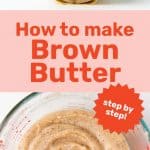
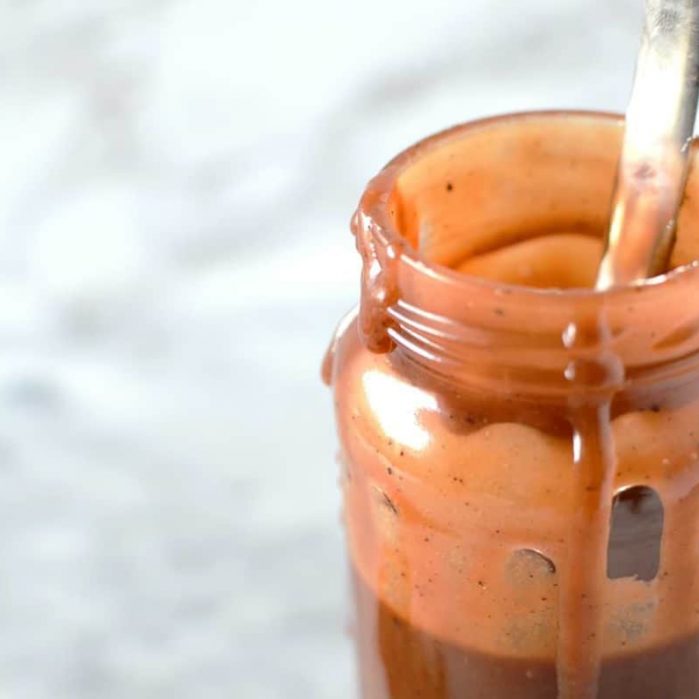
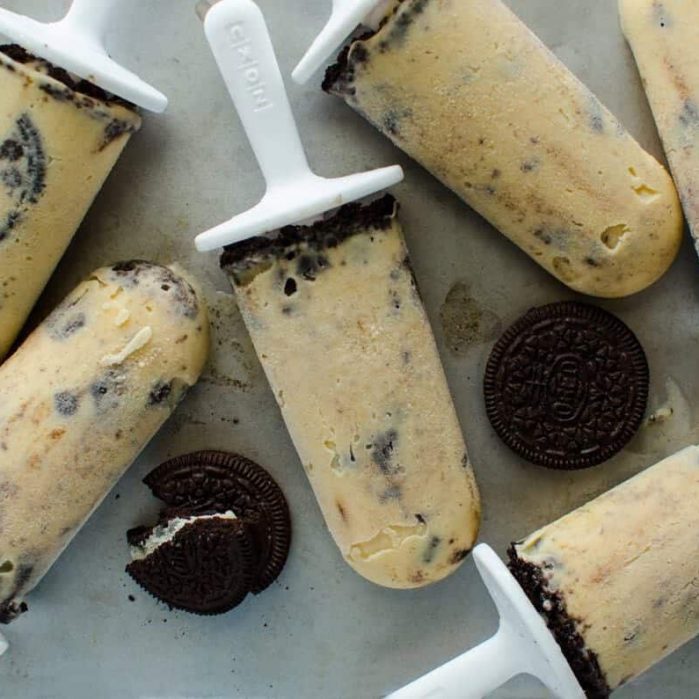
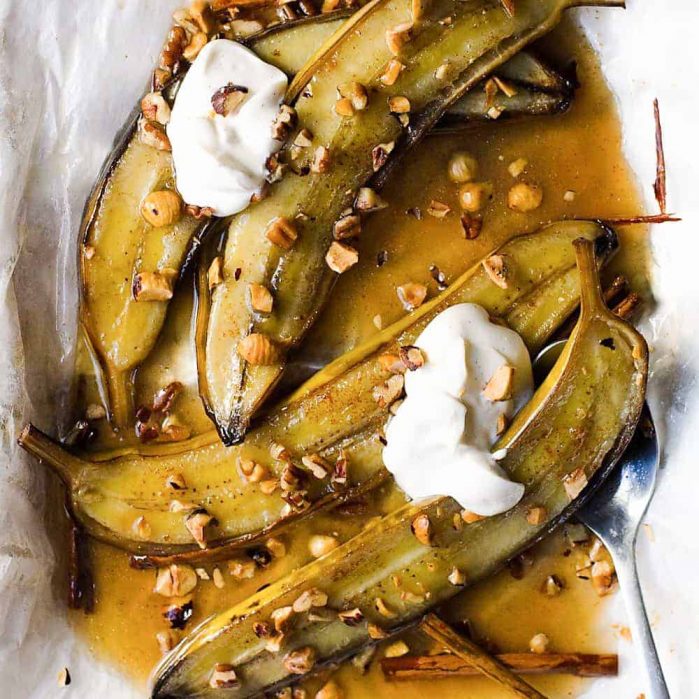
Kathleen Nguyen says
Hello Dini, I was wondering if I brown the butter for shortbread and let it chill, would I have to remeasure the amount used? So if it calls for 1 cup of unsalted softened butter, if I melt that down and let it solidy again, would I need to remeasure it to a cup? Thank you for your help